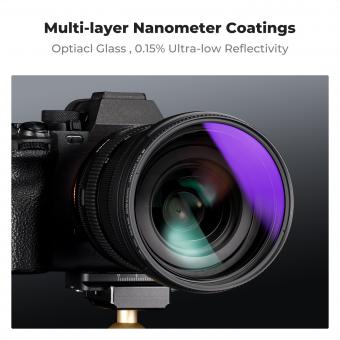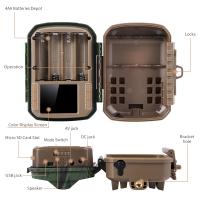What Does Streptococcus Look Like Under A Microscope ?
Streptococcus is a genus of spherical, Gram-positive bacteria that typically appear as chains of cells under a microscope. When stained with Gram stain, they appear purple or blue due to the retention of the crystal violet stain in their thick peptidoglycan cell walls. The cells are usually 0.5-1.0 micrometers in diameter and are often arranged in pairs or chains, which can vary in length depending on the species. Some species of Streptococcus have a capsule or slime layer that surrounds the cell, which can make them appear larger and more diffuse under the microscope. Overall, the appearance of Streptococcus under the microscope can vary depending on the species and growth conditions, but they are generally small, spherical, and arranged in chains or pairs.
1、 Cell morphology of Streptococcus under a microscope:

Streptococcus is a genus of gram-positive bacteria that appears as spherical or ovoid-shaped cells under a microscope. They are arranged in chains or pairs, giving them a characteristic appearance that resembles a string of beads. The cells are typically 0.5 to 1.0 micrometers in diameter and are surrounded by a thick peptidoglycan cell wall.
Under a light microscope, Streptococcus cells appear as small, round, and smooth colonies that are often translucent or opaque. They are non-motile and do not form spores. Streptococcus cells are also catalase-negative, meaning they do not produce the enzyme catalase, which is used to break down hydrogen peroxide.
Recent studies have shown that Streptococcus cells can exhibit a range of morphologies depending on their growth conditions. For example, some strains of Streptococcus can form long chains of cells, while others may appear as clusters or irregular shapes. Additionally, some strains may produce capsules or slime layers that can alter their appearance under a microscope.
Overall, the cell morphology of Streptococcus is relatively consistent across different strains and species, making it a useful diagnostic tool for identifying these bacteria in clinical settings.
2、 - Spherical or ovoid shape

Streptococcus is a genus of Gram-positive bacteria that are commonly found in the human body. They are spherical or ovoid in shape and typically occur in chains or pairs. Under a microscope, they appear as small, round cells that are often arranged in long chains. The cells are typically 0.5 to 1.0 micrometers in diameter.
Streptococcus bacteria are known for causing a variety of infections, including strep throat, pneumonia, and skin infections. They are also responsible for some cases of meningitis and sepsis. In recent years, there has been growing concern about the emergence of antibiotic-resistant strains of Streptococcus, which can be difficult to treat.
One of the latest developments in the study of Streptococcus is the use of advanced imaging techniques to better understand the structure and behavior of these bacteria. For example, researchers have used cryo-electron microscopy to study the structure of the Streptococcus cell wall, which is a key target for antibiotics. Other studies have used fluorescence microscopy to track the movement of Streptococcus bacteria in real-time, providing insights into how they interact with host cells and evade the immune system.
Overall, the study of Streptococcus bacteria continues to be an active area of research, with new insights into their structure, behavior, and pathogenicity emerging all the time.
3、 - Arranged in chains or pairs

Streptococcus is a genus of bacteria that is commonly found in the human body, particularly in the throat and on the skin. When viewed under a microscope, streptococcus appears as small, spherical or ovoid cells that are arranged in chains or pairs. These chains or pairs are formed by the bacteria dividing and remaining attached to each other.
Streptococcus bacteria are Gram-positive, meaning that they retain the crystal violet stain used in the Gram staining technique. This gives them a purple color when viewed under a microscope. The cell wall of streptococcus bacteria is composed of peptidoglycan, which is a complex polymer that provides structural support to the cell.
Recent advances in microscopy techniques have allowed for more detailed observations of streptococcus bacteria. For example, electron microscopy has revealed the presence of pili, which are hair-like structures that extend from the surface of the bacteria. These pili are thought to play a role in the attachment of the bacteria to host cells.
In addition, fluorescence microscopy has been used to study the behavior of streptococcus bacteria in real-time. This technique involves labeling the bacteria with fluorescent dyes, which allows them to be visualized under a microscope. By tracking the movement of the bacteria, researchers have gained insights into how they interact with host cells and how they evade the immune system.
Overall, the appearance of streptococcus under a microscope is characteristic of Gram-positive bacteria, with small, spherical or ovoid cells arranged in chains or pairs. However, advances in microscopy techniques have revealed new details about the structure and behavior of these bacteria, which may have important implications for understanding their role in human health and disease.
4、 - Gram-positive staining

Streptococcus is a genus of Gram-positive bacteria that can cause a variety of infections in humans, ranging from mild to severe. When viewed under a microscope, Streptococcus appears as small, spherical or ovoid-shaped cells that are arranged in chains or pairs. The cells are typically 0.5 to 1.0 micrometers in diameter and are surrounded by a thick, protective cell wall.
Gram-positive staining is a common method used to identify Streptococcus under a microscope. This staining technique involves applying a crystal violet stain to the bacterial cells, followed by a counterstain of safranin. Gram-positive bacteria, such as Streptococcus, will retain the crystal violet stain and appear purple or blue under the microscope.
Recent advances in microscopy techniques, such as confocal microscopy and electron microscopy, have allowed for more detailed visualization of Streptococcus and its interactions with host cells. These techniques have revealed that Streptococcus can form biofilms, which are complex communities of bacteria that are highly resistant to antibiotics and immune defenses. Biofilms can contribute to the persistence of Streptococcus infections and make them more difficult to treat.
In conclusion, Streptococcus appears as small, spherical or ovoid-shaped cells that are arranged in chains or pairs when viewed under a microscope. Gram-positive staining is a common method used to identify Streptococcus, and recent advances in microscopy techniques have provided new insights into the biology of this important pathogen.






































There are no comments for this blog.